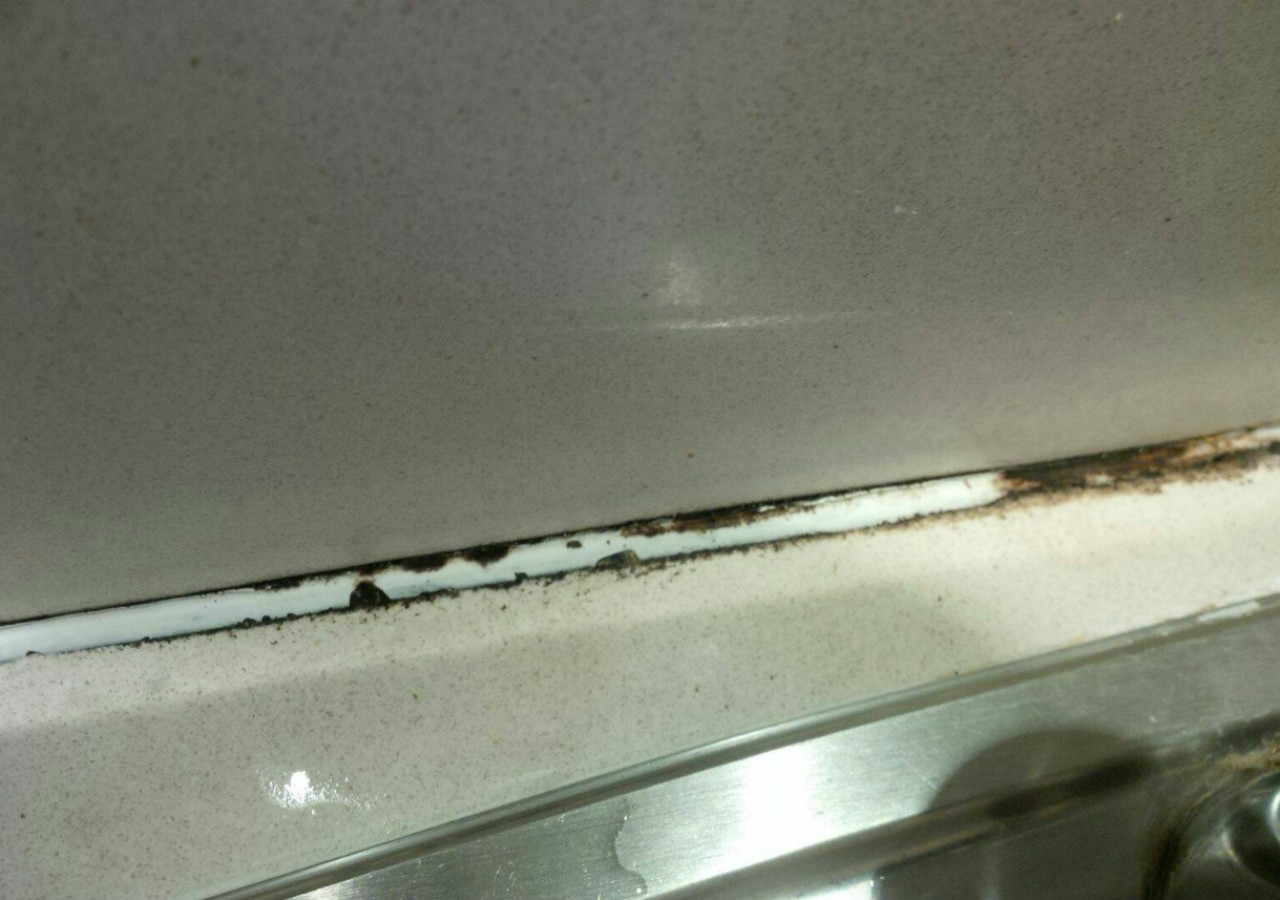
How To Get Rid Of Mould And Mildew
Effective Ways To Remove Mould And Mildew
Banish toxic mould and mildew from your kitchen and bathrooms today!
Mildew and mold are types of fungi that thrive in damp environments, feeding on organic matter and reproducing through spores. They can grow on various surfaces, including walls, ceilings, floors, and furniture, and can cause health issues, damage to structures, and unpleasant odors.
In Singapore’s humid climate, mildew and mould are actually quite a common sight in most homes.
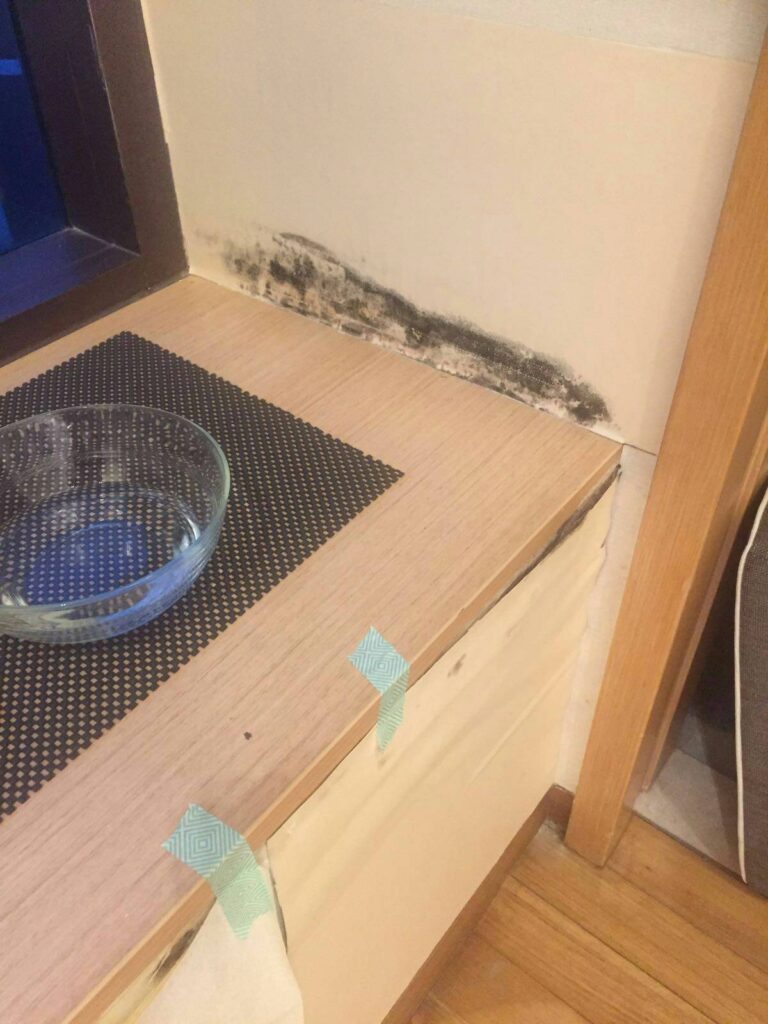
What Are Mildew And Mould?
Both mildew and mould sprout from the millions of tiny spores floating in the air around us. Once they find a damp warm place to live, they will breed rapidly, forming ever-expanding colonies.
Mildew:
- A type of fungus that grows on surfaces, typically appearing as a white or grayish powder which turns brown/black if not removed promptly.
- Generally rests flat on the surface of a moist area.
- Often found in areas with high humidity and poor ventilation.
- May have a foul odour
- Can be easily removed with cleaning products.
Mould:
- A type of fungus that grows on organic matter, typically appearing as greenish-black or black patches.
- Fuzzy, raised appearance.
- Can grow on a variety of surfaces, including walls, ceilings, and floors.
- Can produce toxic spores, causing health issues and strong musty odours.
- Produces allergens that can trigger allergic reactions and asthma attacks
Mildew is the most common type of black mould on walls, and around the kitchen sink – characterised by spots that can then spread over larger areas if left untreated.
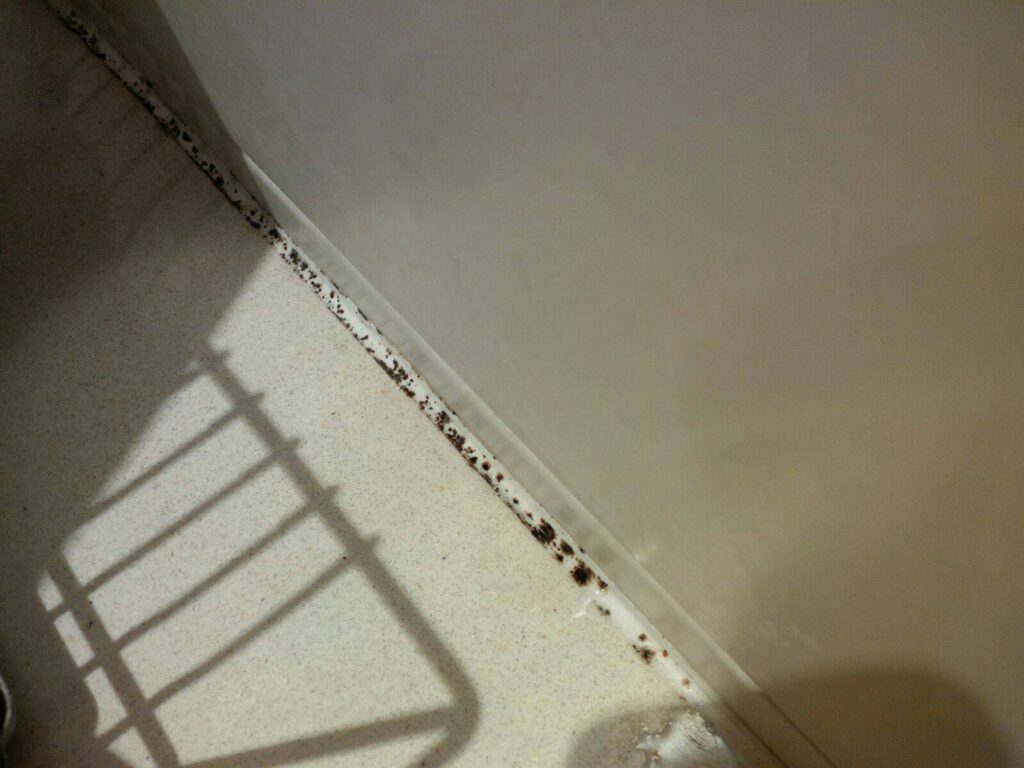
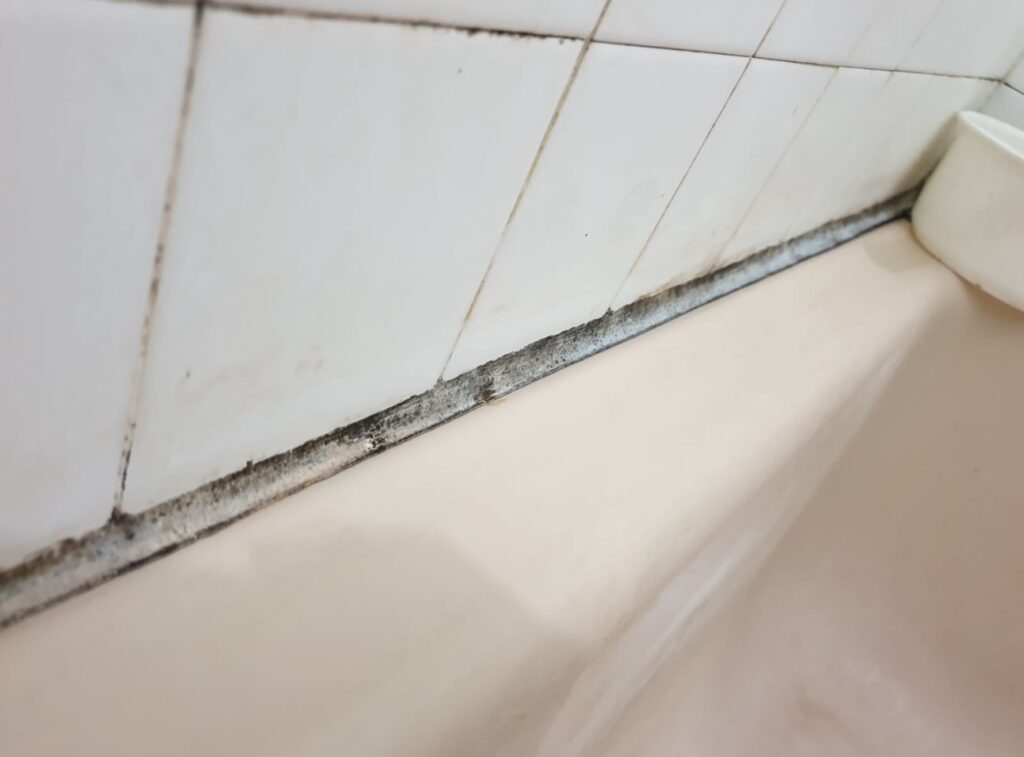
Mould develops from airborne spores. It usually grows in damp, warm conditions without much airflow, which is why household bathrooms, kitchens and toilets often suffer from mould. Lack of ventilation within an enclosed space plus Singapore’s humid climate aggravates the mould problem.

But sometimes mildew or mould on walls can also be due to plumbing leaks from leaky pipes, faucets, toilet bowls and water heaters etc. Badly corroded heating pipes can also cause a build-up of moisture behind the walls.
How To Look Out For Mildew And Mould Growth?
You may begin by noticing a damp, musty odour in a specific area of your home. This means you should check for damp walls, ceilings, doors, carpet, flooring and any other spaces that may be breeding grounds for mildew and mould.
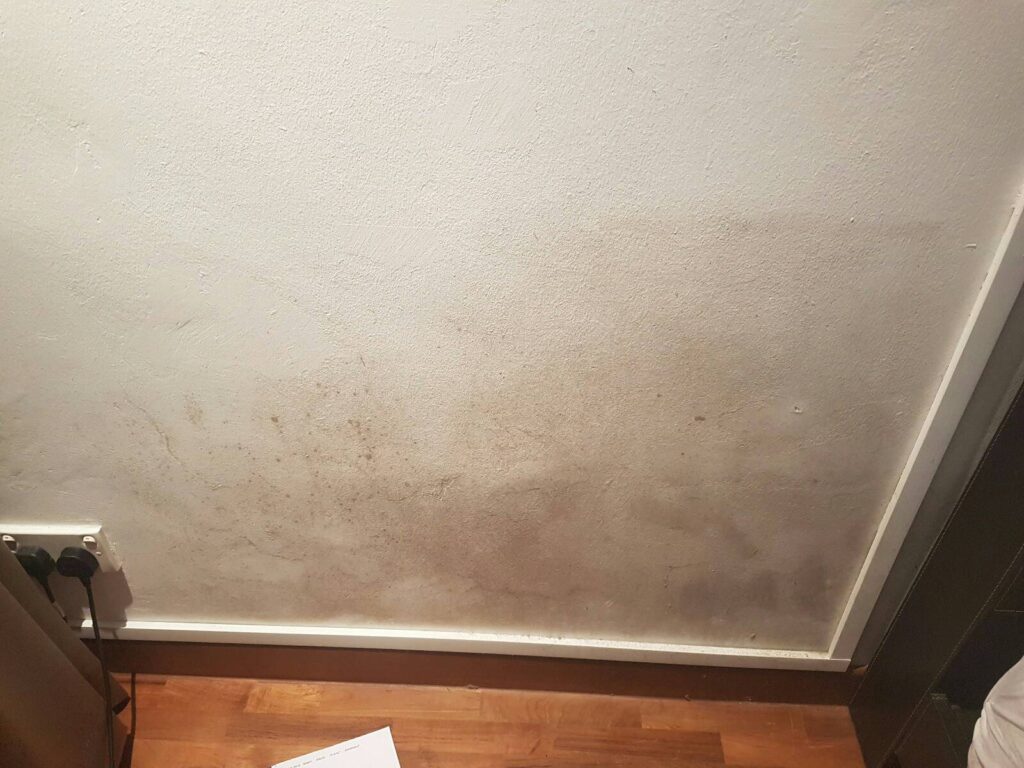
They can be white, grey, green or black in colour. They can appear as spots, fuzzy, or even slimy in nature.
Danger zones are tiles – especially the grouting and silicone sealants around sinks, bathtubs and showers.
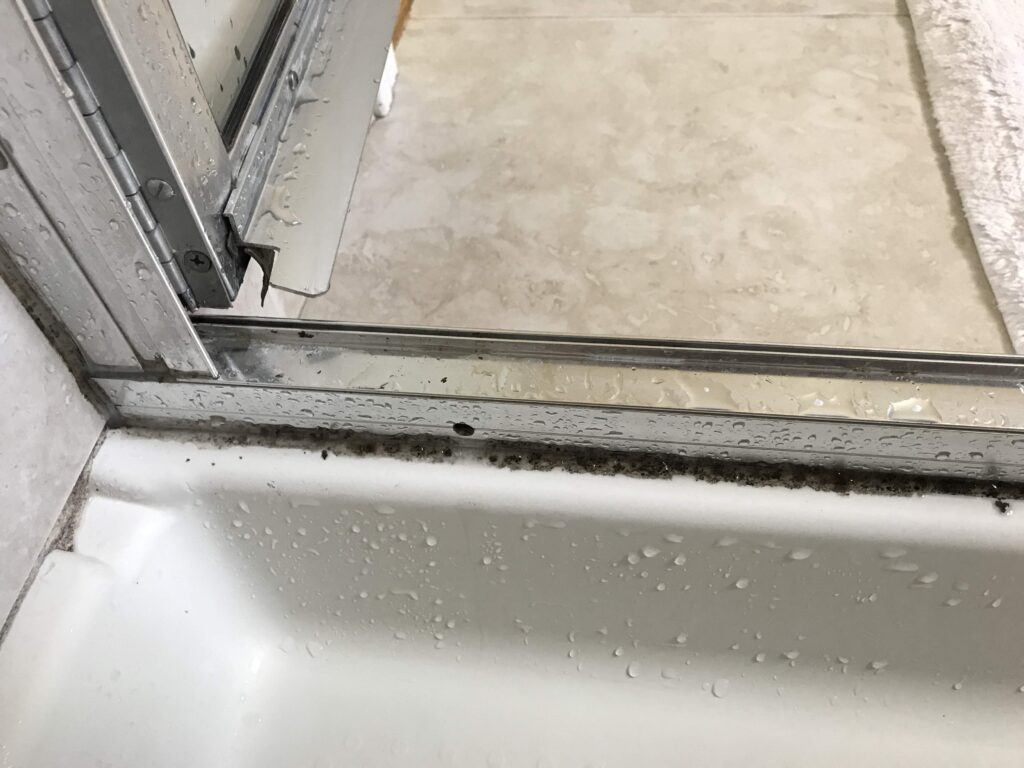
How To Prevent Mildew And Mould?
Strictly speaking, there is no 100% way to prevent growth of mildew and mould. We can only try our best to keep our atmosphere and environment as dry as possible with good ventilation and frequent wiping down of wet surfaces.
Opening the windows after you’ve showered or had your bath is the best form of ventilation. Spread out your shower curtains and towels to dry. Install an extractor fan or blower if necessary.
Tackle any plumbing leaks as soon as possible, before the moisture seeps into the cavities, under your flooring and through your walls and ceilings. The dampness will cause your cupboards, cabinets and drawers to turn mouldy and disintegrate, your ceilings and flooring will be damaged, and your water/heating pipes will get corroded.
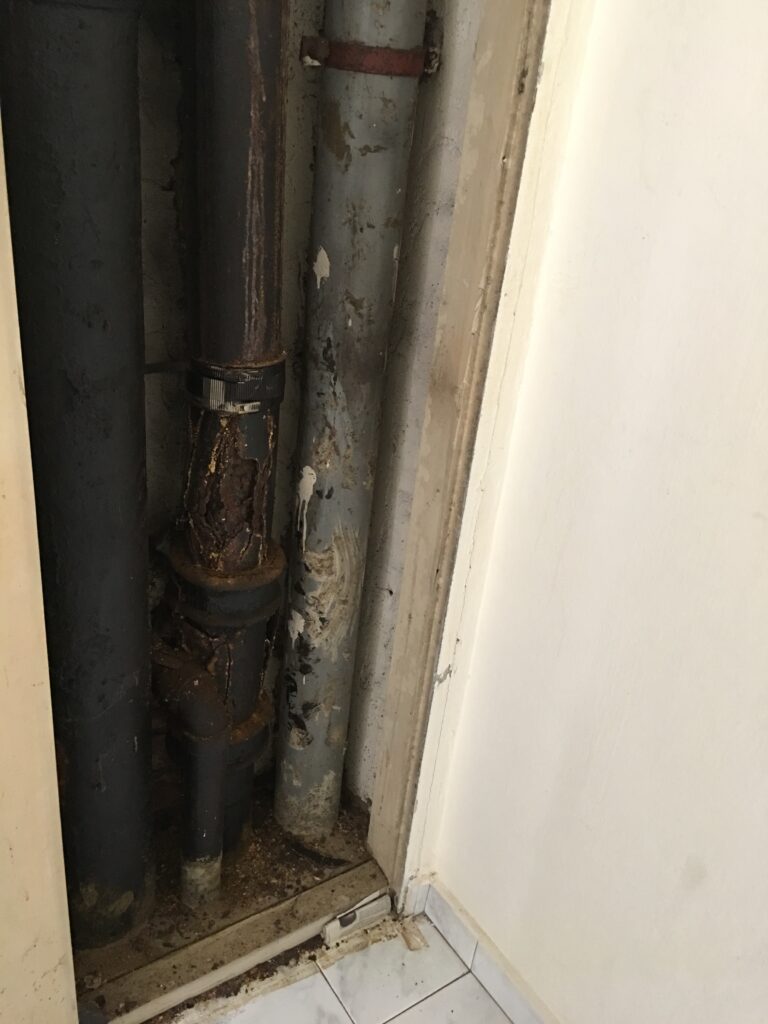
Consider placing dehumidifiers or moisture absorbers like Thirsty Hippo to help remove moisture from the air. These dehumidifiers can prevent mould and mildew, combat musty odours, and keep small spaces dry and fresh. Placed in a cabinet or wardrobe, it ensures all clothes and other items in your wardrobe are kept fresh smelling.
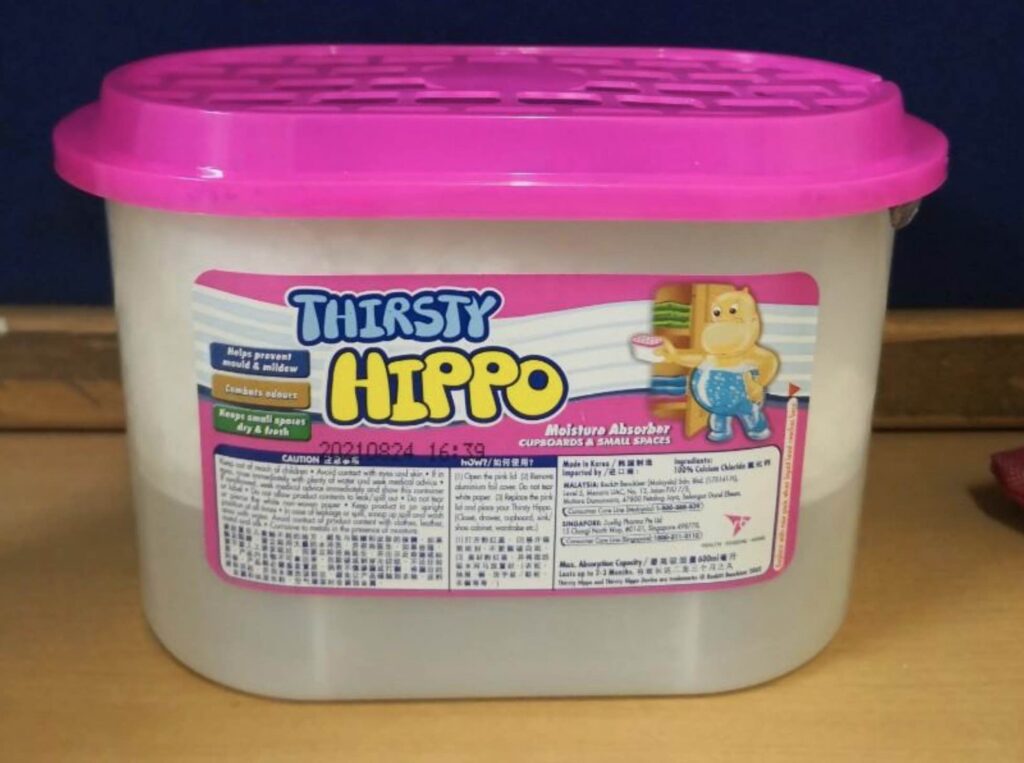
How To Treat And Remove Mildew And Mould?
The key to treating mould and mildew is to wipe it out of your home immediately. Treating it accordingly will safeguard your home from permanent damage and keep you from breathing in the toxic mould spores which cause allergies, asthma, irritated eyes, headaches and even lung problems.
General Staining
Spray with a bleach solution.
Leave for half an hour.
Scrub and rinse off.
For Tougher Blacker Stains
Make a paste of borax and lemon juice or vinegar.
Leave on for half an hour.
Scrub and rinse off.
For Removing Mildew From Tile Grout
Mix 2 parts baking soda + 1 part borax + hot water to make a thick paste.
Apply to grout.
Scrub with a soft brush.
Rinse well.
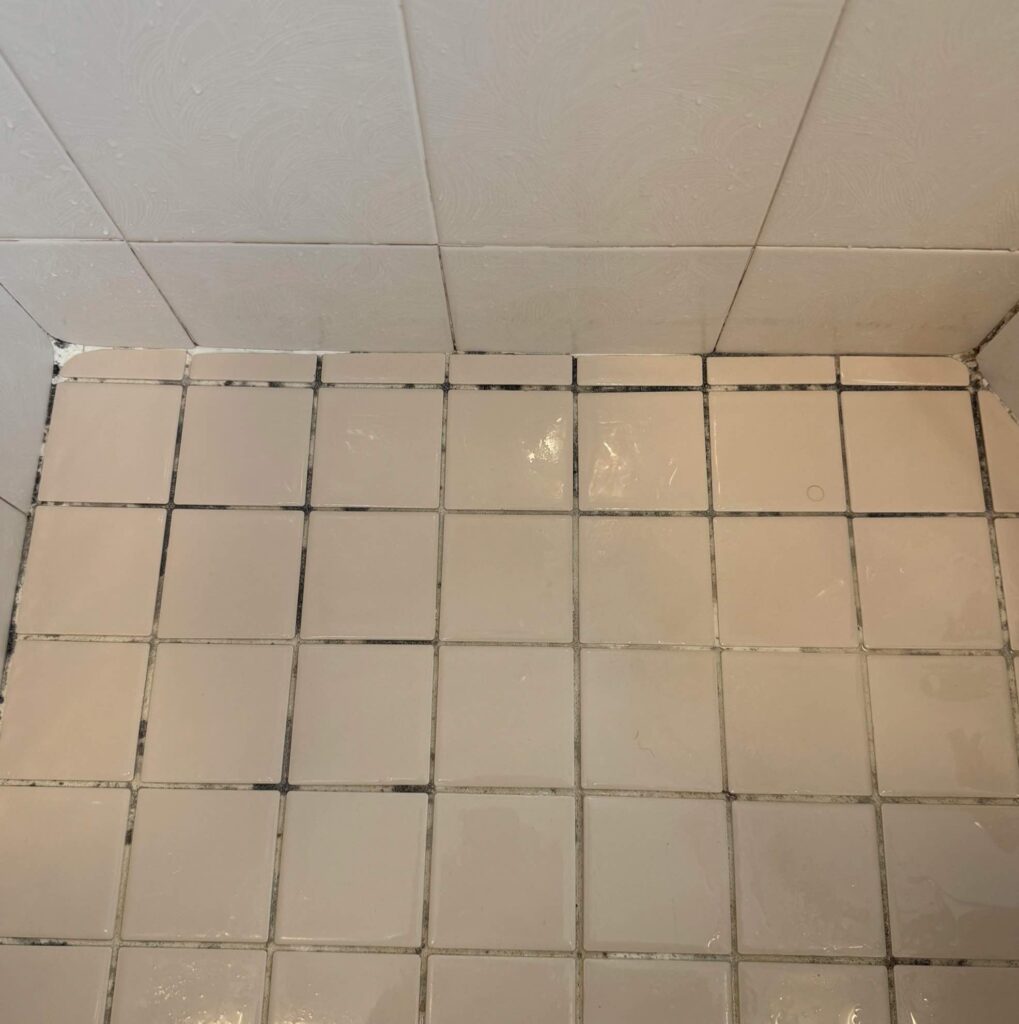
For Removing Mildew/Mould From Sealant Around Sinks, Bathtubs, Showers
Wipe with vinegar.
Then wipe with a paste of baking soda.
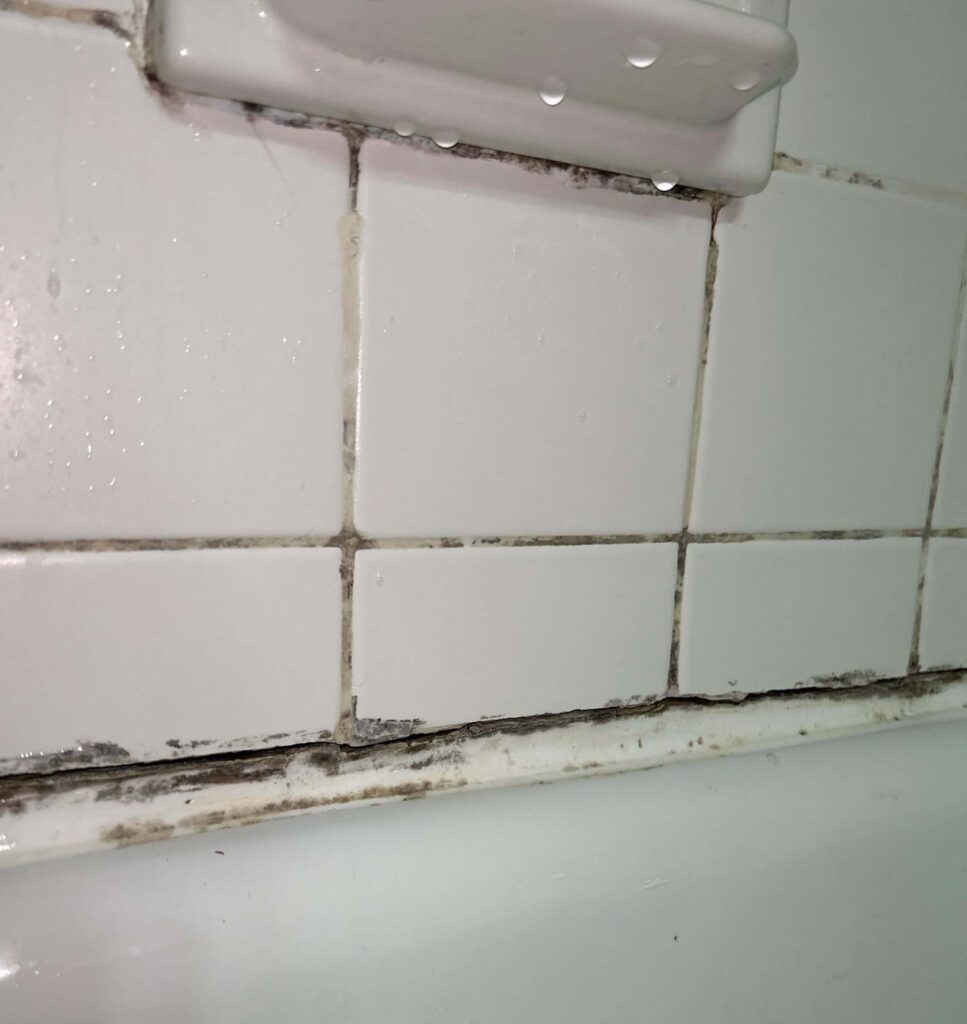
Replace As A Last Resort
If all the above methods fail to remove the mildew and mould, or if the problem keeps coming back, consider re-caulking your kitchen sink, bathtub, shower or bathroom basin. Simply remove the existing mouldy caulk, spray the area with mildew remover, and put in the new caulk.
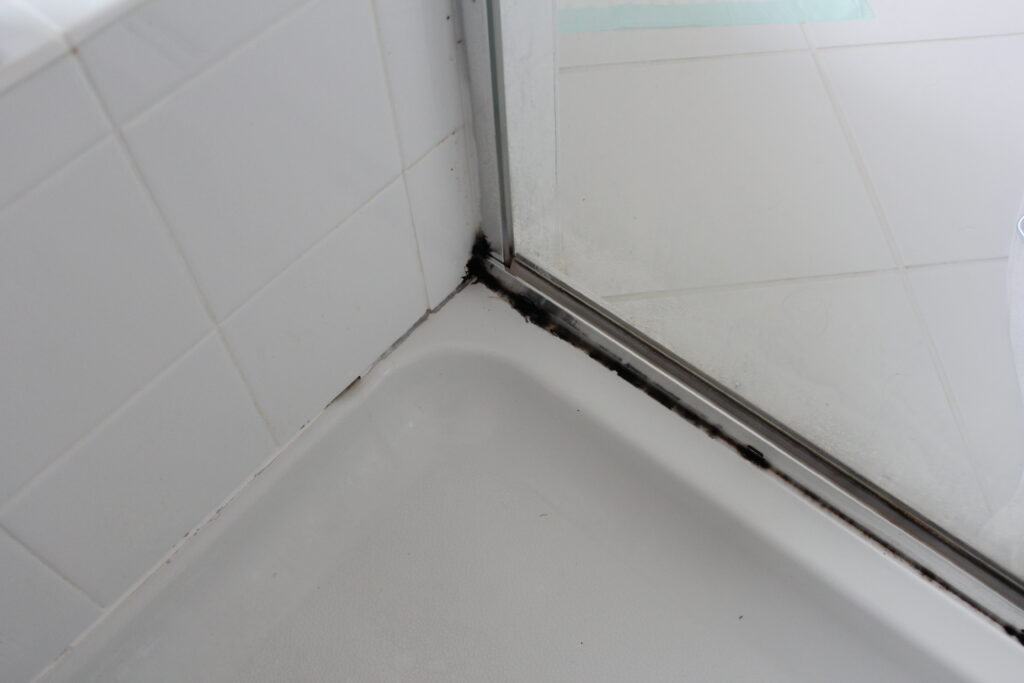
The reason there is mildew in the first place is because the caulk line seal is already broken and moisture seeps into it, thus providing a damp environment where mildew thrive. Replacing the old caulk with new caulk, and making sure it is properly done, with no holes in between – should do the trick.
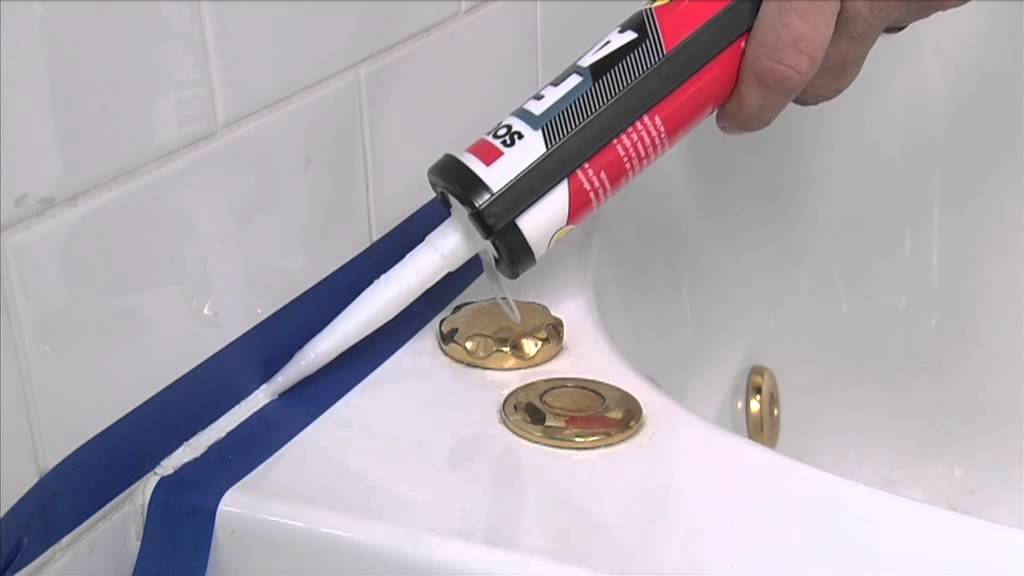
Deal With It Promptly
Mildew is a surface-level fungus that grows on top of wet, hard surfaces. Mould is a fungus that roots deep into softer organic materials that are wet.
All mildew is mould, but not all moulds are mildew. The most common type of mould found in homes is mildew. Both can be harmful to our health, especially mould which releases toxins and allergens.
Thus it is highly recommended to deal with them promptly before they threaten our health and cause bigger structural damage to our homes.
Remember, prevention is key! By controlling humidity, fixing water leaks, and maintaining good ventilation and cleaning habits, you can help prevent mildew and mold growth in your home.
Should you need professional help dealing with the leaks in your bathroom or kitchen, or require re-caulking service for your kitchen sink or shower stall, feel free to contact our specialists for hassle-free service.
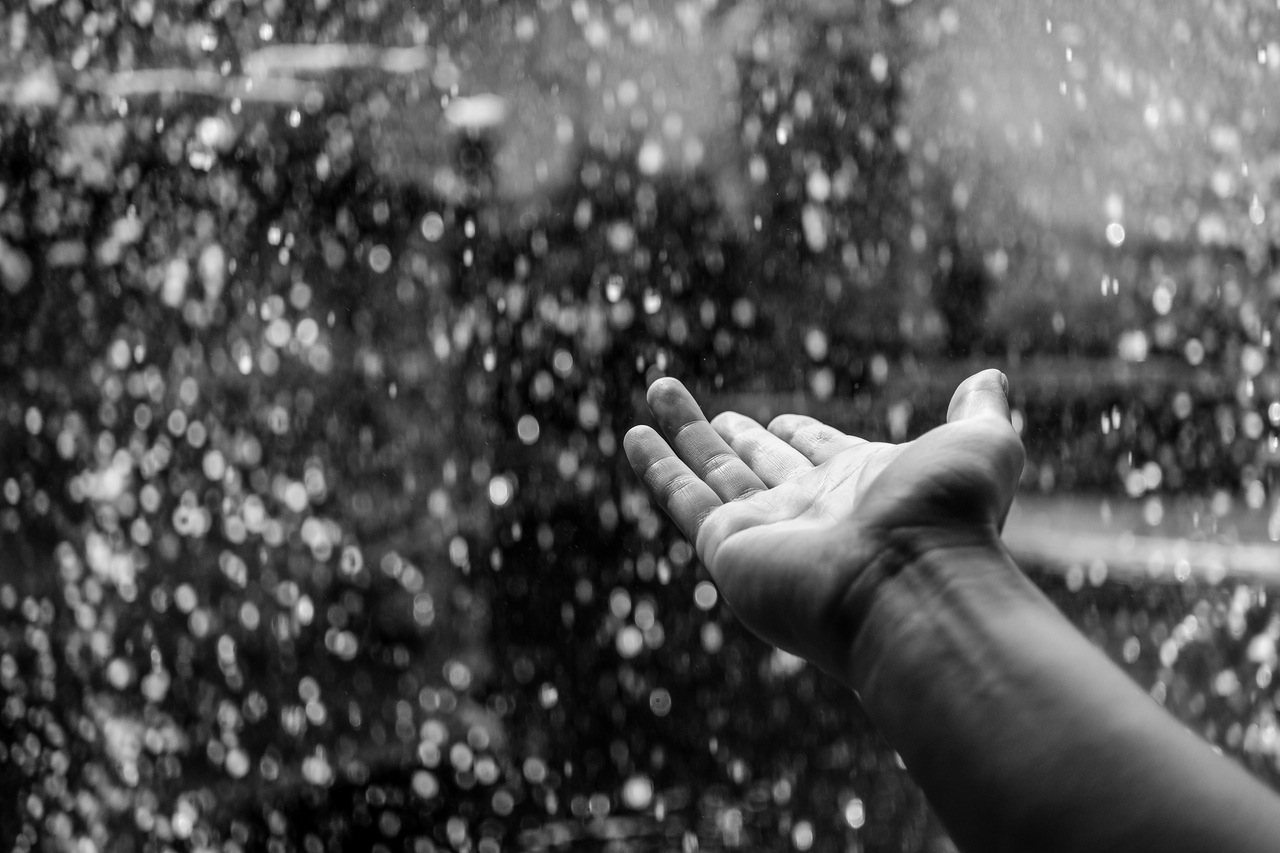
Get In Touch
Contact us today for dependable solutions to all your plumbing and electrical needs.